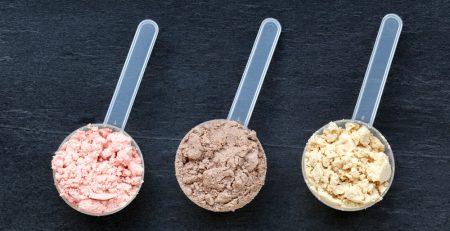What is soy protein?
Soy Protein
Few foods evoke greater emotion than soy. It elicits fears of decreased testosterone, less optimal strength, and feminization of masculine features. There’s plenty of misinformation about soy. The truth is there are plenty of health and performance benefits to consuming soy protein with plenty of research to back it up.
[php_everywhere]
Quick Protein Overview
All proteins are made of amino acids linked together in a long chain. Our body needs access to all 20 amino acids to build and repair tissue (protein’s main role in the body). The body has the ability to make some of the amino acids on its own; these amino acids are known as non-essential. The amino acids we lack the ability to make are known as essential amino acids. We must get essential amino acids from the foods and supplements we consume.
There are many different types of proteins in the dietary world. Some come from animal sources while other come from plant sources. Some proteins contain all of the essential amino acids (complete proteins) while others lack one or more of the essential amino acids (incomplete proteins).
What is soy?
Before we get into soy protein, we should understand where soy comes from. Soy is a legume; it grows in enclosed pods. Soy is characterized by its high protein, healthy fat, and fiber content. Its amino acid profile makes it unique. The vast majority of vegetable proteins lack one or more of the essential amino acids, making them incomplete proteins. Soy protein is one of the few vegetable proteins that is complete1.
The soy bean can be eaten fresh (edamame) and is a versatile food that is processed into many popular products including: tofu, miso, and tempeh. There are also products made from soy bean extracts: soy isolate and concentrate protein powders, soy flour, soy milk, and soy yogurt1.
How is protein quality determined?
Soy’s reputation as a protein supplement isn’t great. When compared to the more popular whey and casein proteins, few think of soy as having the ability to deliver the same results, especially to athletes. Determining the quality of a protein is essential to figuring out what benefit it provides. How do we actually determine how good a protein is beyond the marketing hype? It turns out researchers have developed a few ways to rate proteins based on factors such as digestibility and amino acid content2.
Protein Efficiency Ratio. The protein efficiency ratio (PER) determines a protein’s effectiveness through animal growth measurement. This tool is used by feeding rats a specific amount of a certain protein and measuring growth. Casein protein has a standard PER value of 2.7. Any protein scoring above a 2.7 is considered an excellent source2.
Biological Value. Amino acids and protein contain nitrogen which is required to grow new tissue. This tool is a measure of how much nitrogen from a protein is used for tissue growth. It’s calculated by measuring the nitrogen used for tissue formation and dividing it by the nitrogen absorbed from food. The result is multiplied by 100 and displayed as a percent. The biological value shows how efficient the body is at using a specific protein for growth. Animal proteins typically have a higher biological value than plant proteins as this value goes up with increasing amounts of essential amino acids present in a protein2.
Net Protein Utilization. This is similar to biological value except it measures nitrogen consumed rather than the amount of nitrogen absorbed from food. Nitrogen consumed is divided by nitrogen utilized in the body, multiplied by 100 and displayed as a percentage2.
Protein Digestibility Corrected Amino Acid Score (PDCAAS). PDCAAS is a tool to measure a protein’s essential amino acid quality. The PDCAAS tool tests a protein by comparing the amount of essential amino acids the body can use from that protein to a reference protein. It measures fecal nitrogen content and gives a score that ranges from 0 (worst) to 1 (best)3.
Protein Quality Comparison
The table below compares soy protein to whey and casein proteins.
| Protein Type | Protein Efficiency Ratio | Biological Value | Net Protein Utilization | PDCAAS |
| Casein Protein | 2.7 | 77 | 76 | 1.00 |
| Soy Protein | 2.2 | 74 | 61 | 1.00 |
| Whey Protein | 3.2 | 104 | 92 | 1.00 |
Table 1: Protein quality rankings2
Soy Protein Quality
Vegetable sources of protein, when combined to account for all of the essential amino acids, are an excellent way to increase protein intake. Reducing animal sources of protein such as meat and dairy decreases intake of saturated fat and lowers the risk of cardiovascular disease. Soy protein contains all of the essential amino acids making it an easy replacement to animal proteins2.
Some protein quality ratings are lower for soy protein than animal proteins. The protein efficiency ratio, biological value, and net protein utilization of both whey and casein are superior to soy. However, the PDCAAS scale shows soy protein to be equivalent to both whey and casein, likely due to its amino acid profile2.
Soy Protein Types
The soy bean is separated into three categories: flour, concentrates, and isolates. Soy flour contains 50% protein, soy concentrate contains 70% protein, and soy isolates contain 90% protein. Soy concentrates and isolates are mainly used in supplement products. Soy concentrates retain some carbohydrates and fiber while soy isolates contain significantly less2.
The Bottom Line
Soy protein has become a popular alternative to animal sources of protein; both in the form of supplements and meat alternatives. In the lab, some measures of soy protein quality are significantly lower than whey and casein products. In this series, we’ll look into the research to see what these differences in protein quality mean for how well soy protein fares in improving overall health, performance, hormone levels, and body composition.
Soy Protein Series
Does soy protein decrease testosterone levels?
What are the health benefits of soy protein?
Does soy protein increase strength?
Does soy protein improve cardio?
Does soy protein improve body composition?
Does soy protein speed up recovery?
Final Verdict – Is soy protein worth taking?
References
- James, L., & McDonald, S. (2014, August 05). Soy Protein and Soy Isoflavones. Retrieved from https://extension.psu.edu/soy-protein-and-soy-isoflavones
- Hoffman, J. R., & Falvo, M. J. (2004). Protein – Which is Best? Journal of Sports Science and Medicine.
- Schaafsma, G. (2000). The Protein Digestibility–Corrected Amino Acid Score. The Journal of Nutrition, 130(7). doi:10.1093/jn/130.7.1865s












